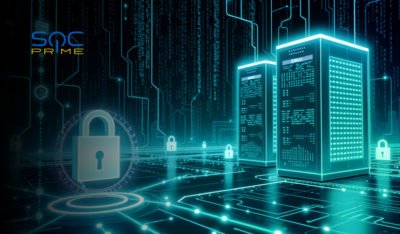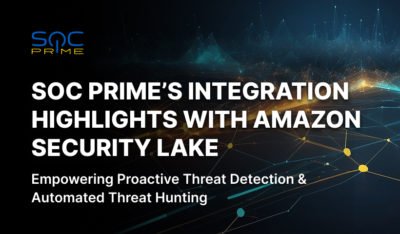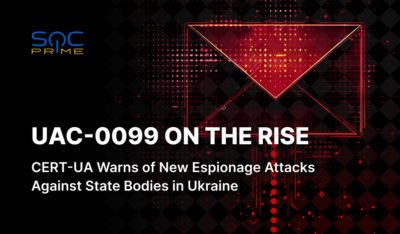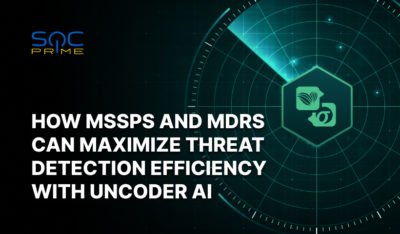
In the face of increasingly sophisticated cyber threats, security service providers such as MSSPs and MDRs strive to enhance threat detection capabilities while scaling their businesses. Managing detection rules across multiple security solutions in the environments of current and potential clients poses a significant challenge to service providers as they must align their service capabilities with market demand, ensuring readiness to support any technology.
This complexity not only makes staffing difficult, requiring experts with proficiency in multiple SIEM solutions, but also complicates the scalability of their services and market expansion. Maintaining flexible and efficient threat detection becomes crucial for meeting clients’ expectations and staying competitive.
What are the peculiarities of working with detections as MDR/MSSP?
Detection engineers, SOC analysts, and SIEM administrators in MDR/MSSPs face daily challenges managing detections across diverse client infrastructures. With various SIEM technologies and environments, engineers must constantly adapt detection rules to be effective, precise, and tailored to each client’s needs.
Expertise in multiple SIEMs. Daily, engineers must work with various security solutions and develop a broad knowledge of query language, architecture, and detection logic peculiarities for each security platform. A vendor-agnostic approach to detection engineering might greatly simplify the process. Additionally, tools like Uncoder AI significantly ease the amount of manual work required to maintain detection efficiency by enabling engineers to convert detection logic across various SIEM formats quickly.
Constant rule tuning. Engineers are responsible for continuously refining, updating, and enhancing detection rules as they must ensure that their rules are capable of detecting new attacks.
Scalability and automation. The team’s proficiency in maintaining and managing detection rules at scale is crucial for delivering tailored detection capabilities for multiple clients. Relying heavily on manual work in multiple processes can lead to errors, inefficiencies in detection, and other bottlenecks in the detection pipeline. Equipped with Uncoder AI, teams can leverage automation capabilities to quickly and seamlessly translate detection rules across various SIEM platforms, allowing them to focus more on higher-value activities such as threat research and response optimization.
High Operational Efficiency. To meet Service-Level Agreements (SLAs) with clients and reduce the risk of possible customer churn, MDRs and MSSPs must ensure the timely and accurate detection of potential security incidents. Minimizing the Mean Time to Detect (MTTD) and Mean Time to Respond (MTTR) metrics is crucial for demonstrating the effectiveness of their services. This requires a comprehensive approach to optimizing the existing detection rules, continuous finetuning to reduce false positives, and additional contextualization of alerts to improve response speed. Uncoder AI enables teams to achieve their goals to meet client expectations and maintain high operational efficiency.
What are the tasks of MDR/MSSPs that Uncoder AI can assist with?
Converting IOCs into SIEM-specific queries
Detection engineers frequently gather threat intelligence from various sources, including cybersecurity blogs, industry reports, threat intelligence feeds, etc., where Indicators of Compromise (IOCs) serve as core source for identifying potential security incidents. And converting IOCs into SIEM-specific queries for multiple clients is often a manual time-consuming process.

With Uncoder AI, detection engineers can swiftly generate SIEM-specific queries from raw IOCs and further simplify the process by applying the custom data schema and automated deployment by their choice. By streamlining this workflow, engineers can rapidly apply the detections based on the newly discovered threat intelligence into the clients’ infrastructure, which greatly improves the response time to emerging threats and overall operational efficiency.
Converting Sigma and Roota rules into SIEM formats
Companies often outsource vendor-agnostic detections like Sigma and Roota rules. While generic detections provide an easy and flexible format, teams at MDRs/MSSPs need to translate these rules into SIEM-native formats and further adapt them to ensure seamless functionality within specific client environments.

Using Uncoder AI, teams can streamline the routine processes of translating and customizing generic detection rules into 44 SIEM, EDR, XDR, and Dala Lake technologies. Further automated detection adaptations to client-specific needs, such as applying non-default field names, additional conditions, and filters to the detection code, allow teams to save hours while enhancing the accuracy and efficiency of the detection rules in diverse client environments.
Converting Rules from One SIEM to Another
MDRs and MSSPs often handle multiple SIEM solutions for their clients, which requires detection rules to be translated from one SIEM format to another. This task is probably one of the most labor-intensive and requires high proficiency in every SIEM, as each platform has its own query language and a unique format. The engineers have to rewrite queries to fit the syntax and detection logic of each security solution.
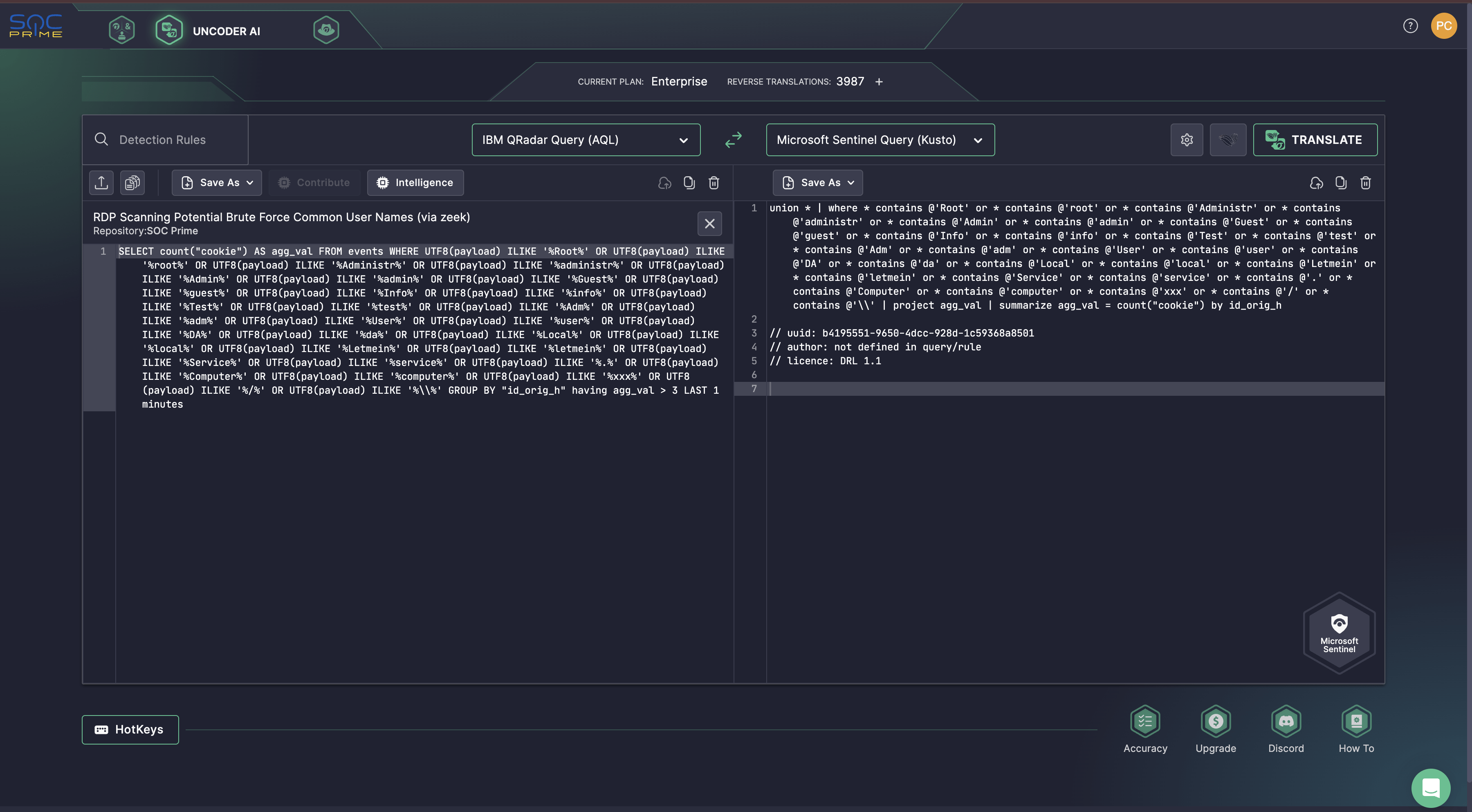
Uncoder AI greatly simplifies the process of adapting the detection logic from one SIEM format to another by automating cross-platform translations. It provides high accuracy and detailed insights for specific datasets and platform pairs. The streamlined cross-platform translation with Uncoder AI eliminates the need for repetitive manual work with SIEM-specific expertise, enabling the team to focus on more critical and creative tasks, such as research and enhancing the detection logic of the existing rules.
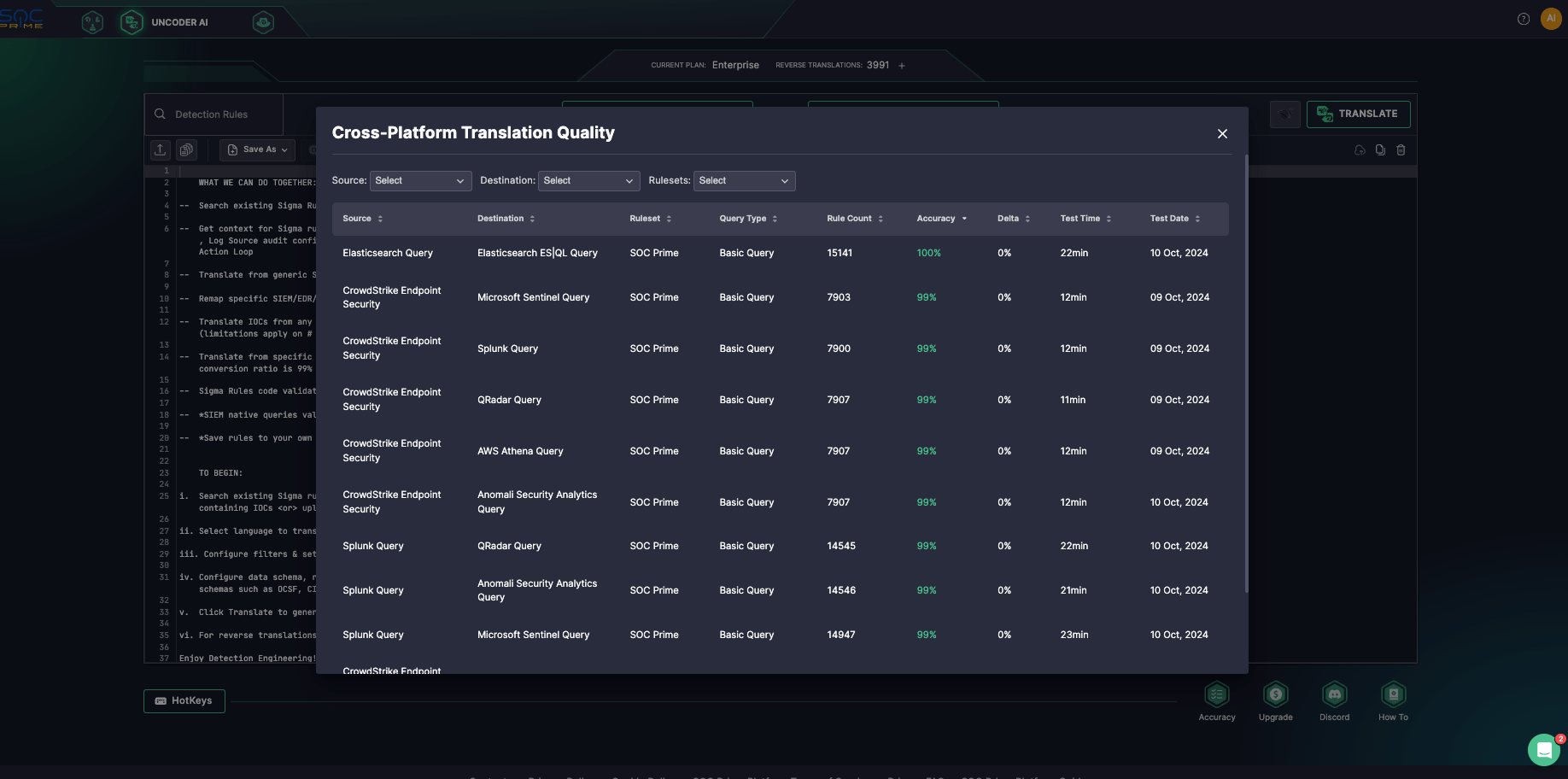
By simplifying cross-platform translation with Uncoder AI, MDRs and MSSPs can greatly improve the delivery time for detections. Also, this enables service providers to offer more flexible services and increase client satisfaction.
What are the key advantages of implementing Uncoder AI?
For managers at MDRs and MSSPs, implementing the SOC Prime product suite, including Uncoder AI, delivers significant strategic benefits and unlocks new opportunities to scale operations and increase profit margin by improving detection accuracy and enhancing service offerings with the existing engineering team.
By automating complex resource-draining operations such as cross-platform rule translation, converting generic detection formats and IOCs into SIEM-specific queries, additional contextualization of detections, and automated deployment, companies can optimize workflows and improve operational metrics. This efficiency boosts the performance of SIEM administrators, detection engineers, and SOC analysts, as well as increases the quality of the services, company reputation, and client satisfaction level through timely, more efficient, and precise threat detection and response.
The post How MSSPs and MDRs Can Maximize Threat Detection Efficiency with Uncoder AI appeared first on SOC Prime.

